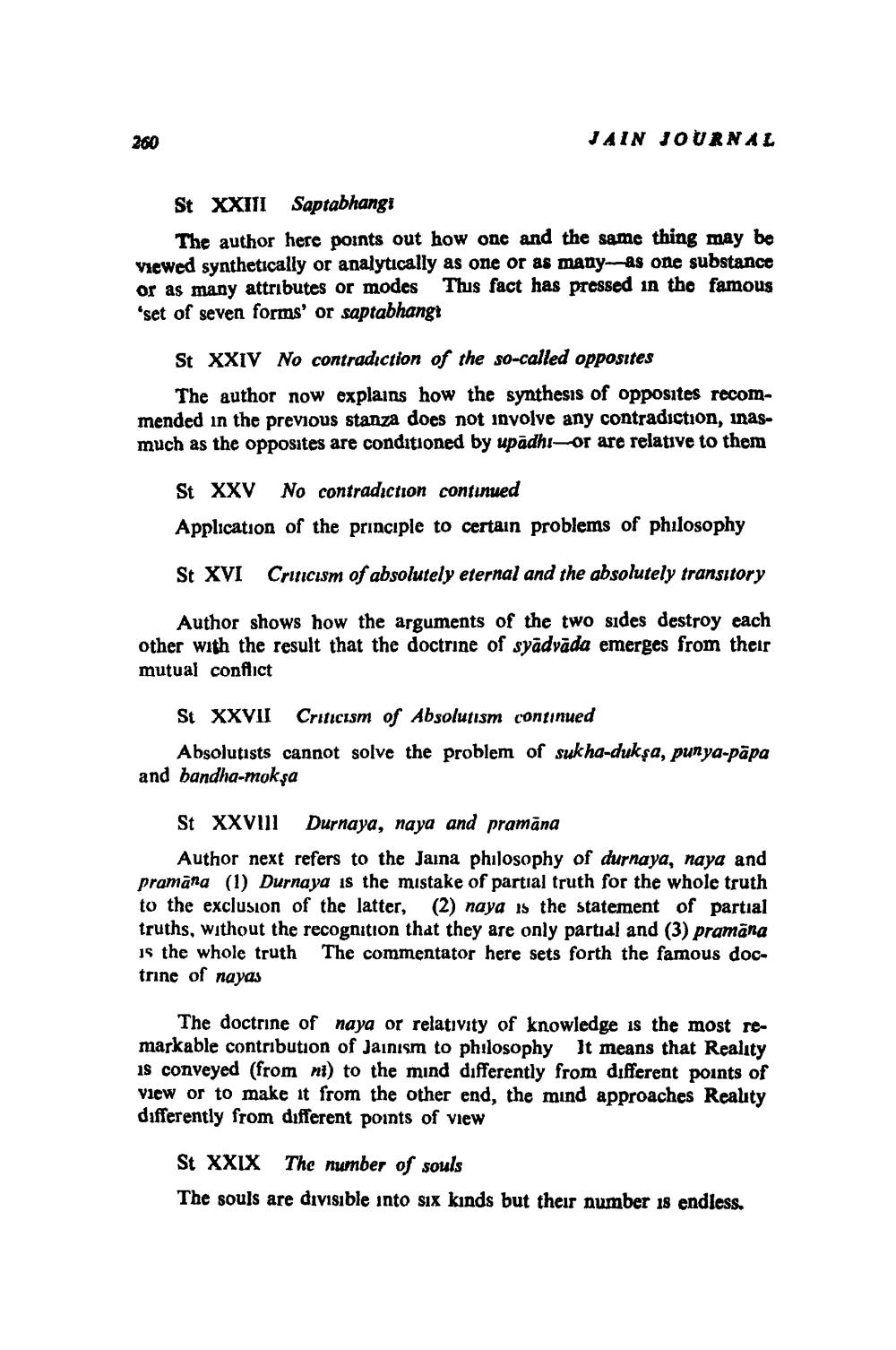________________
200
JAIN JOURNAL
St XXIII Saptabhangi
The author here points out how one and the same thing may be Viewed synthetically or analytically as one or as many as one substance or as many attributes or modes This fact has pressed in the famous 'set of seven forms' or saptabhangt
St XXIV No contradiction of the so-called opposites
The author now explains how the synthesis of opposites recommended in the previous stanza does not involve any contradiction, inasmuch as the opposites are conditioned by upādhı-or are relative to them
St XXV No contradiction continued Application of the principle to certain problems of philosophy
St XVI
Criticism of absolutely eternal and the absolutely transitory
Author shows how the arguments of the two sides destroy each other with the result that the doctrine of syādvāda emerges from their mutual conflict
St XXVII
Criticism of Absolutism continued
Absolutists cannot solve the problem of sukha-duksa, punya-papa and bandha-mokşa
St XXVIII Durnaya, naya and pramāna
Author next refers to the Jaina philosophy of durnaya, naya and pramāna (1) Durnaya is the mistake of partial truth for the whole truth to the exclusion of the latter, (2) naya is the statement of partial truths, without the recognition that they are only partial and (3) pramana is the whole truth The commentator here sets forth the famous doctrine of nayas
The doctrine of naya or relativity of knowledge is the most remarkable contribution of Jainism to philosophy It means that Reality is conveyed (from nt) to the mind differently from different points of view or to make it from the other end, the mind approaches Realty differently from different points of view
St XXIX The number of souls The souls are divisible into six kinds but their number 18 endless.




